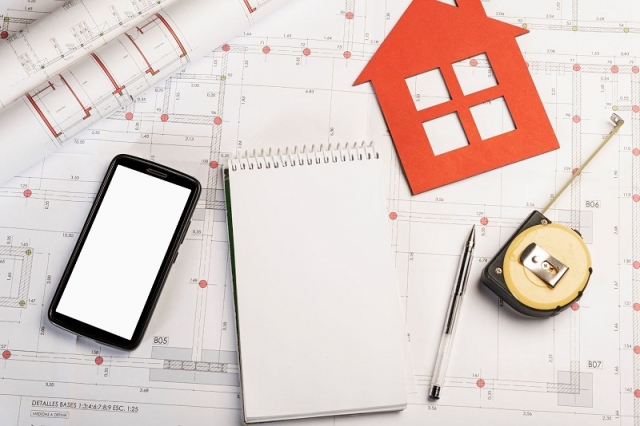Building your dream home is an exciting journey, but understanding the timeline helps set realistic expectations and reduces stress throughout the process. While every project is unique, most custom built homes follow a predictable construction schedule that typically spans 10 to 16 months from breaking ground to move-in day.
This comprehensive guide walks you through each phase of construction, helping you understand what happens when, and how various factors might impact your timeline. Whether you're planning a sprawling estate or exploring options for custom built small homes, knowing what lies ahead empowers you to make informed decisions and work effectively with your builder.
Pre-Construction Phase: Laying the Groundwork (3-6 Months)
Before any physical construction begins, the pre-construction phase sets the foundation for your entire project. This critical period involves finalizing designs, securing permits, and preparing all necessary documentation.
During this phase, you'll work closely with architects and designers to refine your vision. From reviewing floor plans to selecting materials, every decision made now impacts both your timeline and budget. Many homeowners searching for custom built homes near me discover that local builders often have established relationships with suppliers and subcontractors, which can streamline this process.
Design and Planning
The design phase typically takes 2-4 months and involves creating detailed architectural drawings, engineering plans, and construction documents. Your architect will translate your ideas into buildable plans while ensuring compliance with local building codes and regulations.
This is also when you'll make crucial decisions about custom built home designs, including layout modifications, material selections, and special features. Taking time to thoroughly review and approve plans now prevents costly changes during construction.
Permits and Approvals
Securing necessary permits usually requires 1-2 months, though this varies significantly by location and project complexity. Your builder will typically handle permit applications, but understanding the process helps you anticipate potential delays.
Local building departments review plans for safety, zoning compliance, and environmental impact. Some jurisdictions require additional approvals for septic systems, wells, or properties in special flood zones. Working with experienced local builders who understand regional requirements can significantly expedite this process.
Foundation and Site Work (1-2 Months)
Once permits are in hand, construction begins with site preparation and foundation work. This phase transforms your empty lot into a construction-ready site with a solid foundation for your new home.
Site work includes clearing vegetation, grading the land, and installing temporary utilities for construction crews. Excavation follows, creating space for your foundation, basement, or crawl space. Weather plays a significant role during this phase, as rain can delay excavation and concrete work.
The foundation itself requires careful attention to detail. After excavation, crews install footings, foundation walls, and waterproofing systems. Concrete must cure properly before construction can proceed, typically requiring several days to a week depending on weather conditions and foundation type.
Framing and Structural Work (2-3 Months)
Framing brings your home's shape to life, creating the skeleton that supports everything else. This exciting phase shows rapid progress as walls, floors, and roof structures take form.
Professional framing crews work efficiently to erect the structure according to engineered plans. They install floor systems, exterior walls, interior partitions, and roof framing. Once the basic frame is complete, sheathing and house wrap provide weather protection while allowing moisture to escape.
The roof installation follows framing, including decking, underlayment, and final roofing materials. Windows and exterior doors are also installed during this phase, creating a weather-tight shell. Many custom-built luxury homes incorporate complex architectural features during framing, such as vaulted ceilings, elaborate staircases, or multi-level designs that require additional time and expertise.
Systems Installation (2-3 Months)
With the structure complete and weather-tight, various mechanical systems are installed throughout your home. This phase involves multiple trades working in coordination to install plumbing, electrical, HVAC, and other essential systems.
Rough plumbing includes supply lines, drain pipes, and vent stacks running through walls and floors. Electrical rough-in involves running wires, installing outlet boxes, and setting up the main electrical panel. HVAC contractors install ductwork, equipment, and ventilation systems. Modern homes often include additional systems like central vacuum, security wiring, and smart home infrastructure during this phase.
Following rough-in work, insulation crews fill wall cavities and attic spaces with appropriate insulation materials. After insulation, drywall installation begins, transforming rough framed spaces into recognizable rooms. The drywall process includes hanging, taping, mudding, and sanding to create smooth, paint-ready surfaces.
Interior and Exterior Finishing (3-4 Months)
The finishing phase brings personality and style to your home through countless details and material selections. This stage typically requires the most time, as it involves numerous trades and careful attention to craftsmanship.
Interior finishing includes:
-
Painting walls, ceilings, and trim
-
Installing flooring materials throughout the home
-
Setting kitchen cabinets and bathroom vanities
-
Mounting interior doors and trim work
-
Installing plumbing and electrical fixtures
Exterior finishing work happens simultaneously, including siding installation, stone or brick work, and exterior painting or staining. Driveways, walkways, and basic landscaping are also completed during this phase. The quality of workmanship during finishing significantly impacts your home's final appearance and long-term durability.
Final Inspections and Move-In (1 Month)
The final month involves completing punch list items, obtaining final inspections, and preparing for occupancy. Your builder will conduct a thorough walk-through to identify any issues requiring correction before closing.
Local building inspectors perform final inspections of all systems and overall construction quality. Once your home passes all inspections and receives a certificate of occupancy, you can legally move in. Many builders also provide a detailed orientation, explaining home systems, maintenance requirements, and warranty coverage.
Factors That Can Impact Your Timeline
Several variables can extend or occasionally shorten your construction timeline. Weather remains the most unpredictable factor, potentially delaying foundation work, framing, or exterior finishing. Material availability and supply chain issues can also impact schedules, particularly for special order items or custom materials.
Change orders during construction almost always extend timelines and increase costs. While minor adjustments are sometimes necessary, significant changes require updating plans, reordering materials, and coordinating trades. The complexity of your design also affects duration, with elaborate architectural features, custom millwork, or specialty installations requiring additional time.
Labor availability in your area can impact scheduling, especially during busy construction seasons. Inspection delays may occur if local building departments are backlogged or if work requires corrections before passing inspection.
Tips for Staying on Schedule
Clear communication with your builder helps maintain project momentum. Establish regular update meetings and preferred communication methods early in the process. Make design decisions promptly when requested, as delays in selections can cascade through the schedule.
Understanding the construction sequence helps you anticipate when decisions are needed. For example, plumbing fixture selections are needed before rough plumbing, while paint colors can wait until after drywall installation. Working with experienced builders who maintain strong subcontractor relationships often results in better schedule adherence.
Flexibility remains important throughout construction. While builders strive to meet timeline commitments, understanding that some delays are unavoidable helps manage expectations and reduce stress.
Moving Forward with Confidence
Building a custom home represents a significant investment of time, money, and emotional energy. Understanding the typical construction timeline empowers you to plan effectively, make informed decisions, and work collaboratively with your building team.
While the 10-16 month timeline may seem lengthy, remember that your builder is creating a unique home tailored specifically to your needs and preferences. Unlike production homes, custom construction allows for personalization at every step, resulting in a home that truly reflects your lifestyle and values.
As you embark on this exciting journey, choose a builder with a proven track record of communication, quality craftsmanship, and schedule management. With the right team and realistic expectations, you'll soon be enjoying your beautiful new custom home for years to come.






